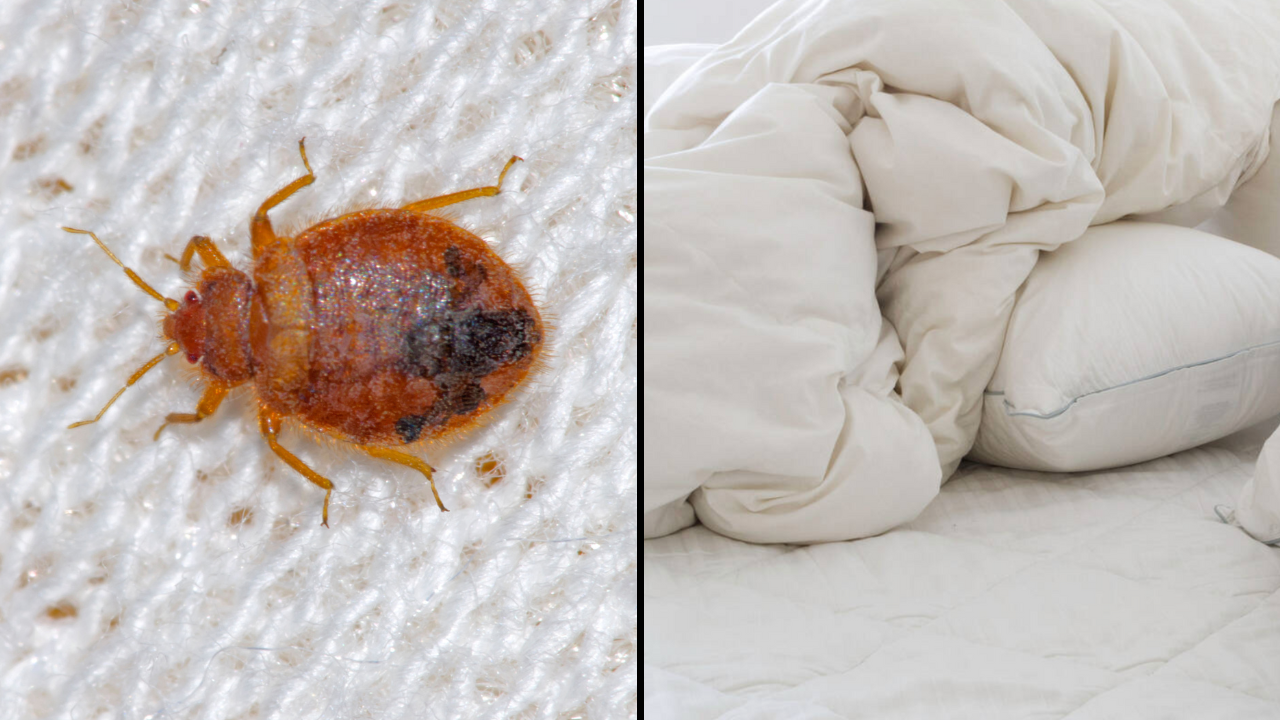Experts have shared insight into how often you should wash your sheets amid a bed bug infestation.
The parasitic insects feed on the blood of animals and humans. Around the size of an apple seed, they’re oval-shaped, reddish-brown, and wingless.
Typically, the bugs find their way into people’s homes by hitching a ride in luggage, clinging to clothing and accessories, or hopping on upholstered furniture.
Detecting the troublesome creature can be challenging, they often go unnoticed until it’s too late and an infestation has firmly established itself.
They are notoriously tough to eliminate and typically, the expertise of a specialist is required.
To avoid the hassle, there are numerous preventatives – one being washing your bedsheets, but how often should you take on this household chore?

Last year, Paris was gripped by a bed bug panic.
Social media users went viral after sharing videos of insects that looked like bed bugs on public transport, prompting some to stand rather than sit on fabric seats.
The situation even escalated to parliament, with one politician declaring (per Reuters): “These little insects are spreading despair in our country.”
But it’s not just Paris that’s been left concerned by the parasitic creature, there’s been a ‘global resurgence,’ per a scientific review.
Over in the U.K., pest control company Rentokil has reported a staggering 65% yearly increase in bed bug infestations.
There have also been increasing reports in the U.S. too.
Pest control company Orkin has released the 2024 list of the top 50 bed bug-infested cities in the States.
Chicago tops the list for the fourth year in a row, while New York and Philadelphia follow second and third.

Experts have spoken out about the resurgence of bed bugs and whether you believe it or not, they say no one is immune from an infestation.
Jody Green, an urban entomologist at the University of Nebraska–Lincoln, specializes in the insect and she tells Mashable: “We’re the perfect host.”
Alvaro Romero, a professor in urban entomology at New Mexico State University, adds: “You can be rich or poor, they don’t discriminate.”
Essentially, the ‘invasion’ of bed bugs is down to our modern-day environment.
With more people than ever living in urban spaces, it’s become increasingly easy for bed bugs to jump from spot to spot. They can even hitch a ride on a plane if they hop on your luggage or clothing.
There’s another concerning reason – researchers say they are growing resistant to pest control chemicals, making stopping an outbreak even more challenging.
Fortunately, there are a few steps you can follow to help prevent an infestation.

As well as ensuring your home isn’t cluttered, it’s important to regularly wash and heat dry your bed sheets, blankets, bedspreads, and other clothing.
But how regular is regular?
Bedbugs.net suggests washing your bedding weekly and ensuring it’s at a high temperature. It’s also advisable to use a high-temperature dryer for around 30 minutes.
Pest experts at Bed Bug Specialist tell the Daily Express: “Washing laundry at 60 degrees for 30 minutes terminates all bed bugs and their eggs. Lowering the temperature to 40 degrees kills all adult bed bugs, but only 25 percent of the eggs.”
To avoid spreading bed bugs to other places on the way to the laundry machine, towels, and bedding should be added to a ‘sealed bag or container.’
“It’s better to use disposable bags which have seals on top, or you can tie them up. Then put the bags in the washing machine and open or rip them inside,” the expert adds.
Pest control company Plunkett’s has also explained how to inspect for bed bugs.
The website instructs: “When you strip your bed to wash the sheets, take the time to give your mattress a quick once-over.
“Flip it over once or twice while checking the corners, nooks, and zipper for bed bugs. Consider vacuuming the mattress to remove crumbs, dirt, or dead skin.
“Check the frame, headboard, and bed skirt, too. If you find bed bugs, strip the mattress bare and wash everything, sheets, pillowcases, and comforter.”
Further bed bug resources are provided on the United States Environmental Protection Agency website.


